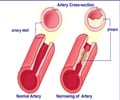Short bursts of low intensity vibration can prevent stem cells from turning into fat cells in young mice, according to a study released Monday.
The findings, while only preliminary, suggest that burning or metabolizing calories by vigorous exercise is not the only way to fend off weight gain -- at least in the young.Mechanical stimulation may prevent fat accumulating in the first place by influencing the development of immature or progenitor cells so that they become muscle or bone cells rather than fat cells.
If the findings can be replicated in humans, it could have implications for the prevention of childhood obesity, the authors said in a paper in the Proceedings of the National Academy of Sciences.
"Everyone thinks of obesity as a metabolic or fat-burning disorder, but our study suggests there may also be a developmental element," said Clinton Rubin, a professor of bioengineering at Stony Brook University in New York state.
In a series of experiments on young adult mice, Rubin and his team showed that mice that were placed on a vibrating platform for 15 minutes every day for 15 weeks accumulated almost 30 percent less body fat than a group of control mice that were put on a stationary platform.
"This could be a non-pharmalogical way of controlling susceptibility to obesity in young people," said Rubin. "It won't make fat kids skinny, but it could control their propensity for getting heavy."
Advertisement
Scientists do not know what the physiological impact of vibration is. One assumption is that it causes muscles to contract and relax which strengthens them and exerts pressure on the bones.
Advertisement
Rubin cautioned against seeing the study as an endorsement of some of the vibrating platforms that are marketed as exercise machines, noting that dangerously high levels of vibration have been associated with lower back pain, percussive injuries to the brain and certain cardiovascular disorders.
Source-AFP
SRM/C









